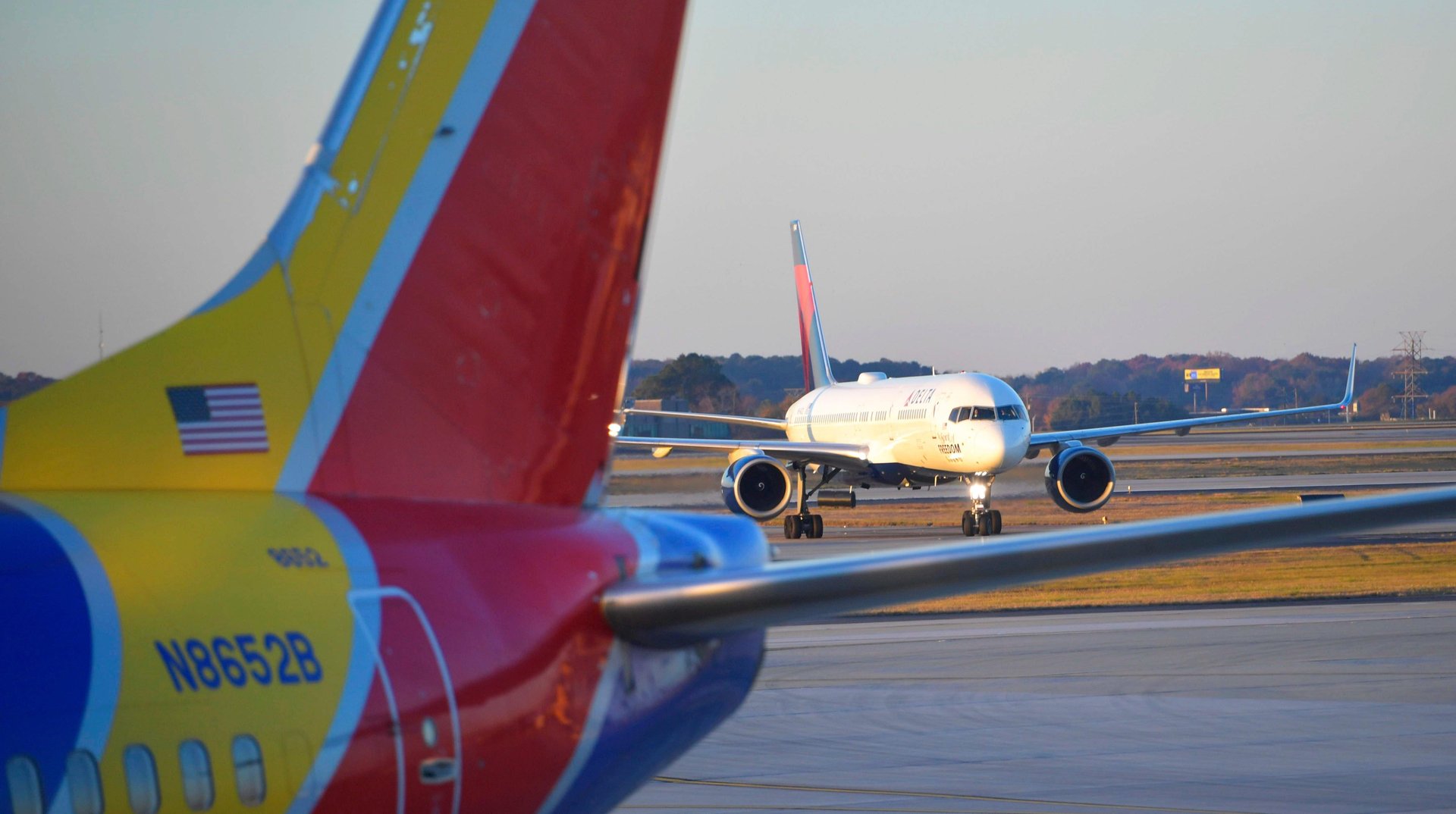Delta is about to kick off airline earnings season. Here's what to expect
Carriers like United Airlines are in a good position. Carriers like Spirit Airlines are not

Airline earnings season kicks off this week when Delta Air Lines presents its quarterly results. Though the Transportation Security Administration says that air travel is hitting record levels, higher expenses mean that profits are having trouble keeping up with rising revenues.
Suggested Reading
But the industry’s wariness isn’t spread evenly — some airlines will be able to dodge those doldrums and some won’t. Here are the narratives and business pressures to keep in mind as America’s biggest carriers give investors updates on their respective businesses.
Related Content
Delta Air Lines (July 11)
Helane Becker, an analyst at TD Cowen covering airlines, said last month after meeting with Delta management that the airline is sitting pretty. Corporate travel is up by double digits. “Premium” flyers in first class and the upper echelons of the carrier’s SkyMiles loyalty program are a source of outsized growth — hence the big investment in extra-fancy airport lounges. Becker and her team say that Delta’s long-term strategy after emerging from bankruptcy in 2007 means that more good news is yet to come.
“The management team has focused on the plan for the past 15 years,” she wrote. “We believe it is bearing fruit, and that the shares remain a compelling opportunity.”
In the background, Delta may have an increasingly visible union drive on its hands that could complicate its cost projections, though shareholders blessed a potential anti-union campaign by voting down a proposal at its recent annual meeting asking the company remain neutral on the matter.
United Airlines (July 18)
The rumblings of softer domestic demand aren’t expected to rattle United as much as some of its competitors.
“Airlines that are most exposed to international, corporate, and premium revenue segments should continue to outperform,” wrote Deutsche Bank analyst Michael Linenberg in a note to clients this week. That group includes United, which made about 40% of its passenger revenue from international flights last year, according to its most recent annual report.
Last month, United CEO Scott Kirby even went so far as to say that airlines that don’t prioritize comfortable, high-priced air travel are stuck in an unsustainable corner of the industry and will go out of business soon.
Southwest Airlines (July 25)
Southwest is probably about to deliver some bad news when it presents earnings later this month. Just last month, the airline lowered its guidance for the quarter. Even though it expects record passenger traffic, it can’t quite get revenue growth to match up: “Complexities in adapting its revenue management to current booking patterns in this dynamic environment” is how the company put it.
If investors can’t get a happy ending to the quarter, they should at least be able to expect some action scenes. A proxy fight is brewing between the carrier and the hedge fund Elliott Management, which took an 11% stake in Southwest and is pushing for big changes to the company’s management and strategy. In response, Southwest adopted a “poison pill” to dilute Elliott’s shares if it tries to seize more control.
With management digging in its heels, Elliott has promised to make its case directly to Southwest’s shareholders. Expect the company to have something to say about that.
Alaska Airlines (Date TBD)
With the January mid-air door plug blowout aboard one of its 737 Max 9s increasingly in the rearview mirror, Alaska will likely be focusing on its steadily improving performance and an update on its merger with Hawaiian Airlines. (Reuters reports that it even sent the plane back to Boeing last month and will be replacing it with a different model — the 737 Max 10). Though Alaska is seeking to dismiss a class action suit seeking to block the tie-up, a potential challenge from the Justice Department could prove a bigger hurdle. In May, the carriers said in a securities filing that they expect the government to determine whether it will move to halt the merger by August 7. Management might be tight-lipped about where that process stands, but expect it to come up on the earnings call anyway.
JetBlue Airways (Date TBD)
Speaking of mergers, JetBlue has been trying to move past the “three years of distraction” it suffered in trying and failing to merge with Spirit Airlines. Though the breakup left JetBlue with some cash on its hands, it’s trying to make up for lost time and the dashed hopes of the revenue it would have gotten from being a bigger player. Just last month, the company announced a demand-stimulating move to eliminate carry-on fees for its cheapest fares. Expect more strategy updates when JetBlue presents earnings later this summer.
American Airlines (Date TBD)
American Airlines should be in as plum a position as Delta and United, but it’s facing a number of challenges, from a potential flight attendant strike to disgruntled business-class flyers and a related search for a new chief commercial officer. Though problems seem to be mounting, expect CEO Robert Isom to assure investors that the carrier is digging itself out of its hole.
Spirit Airlines (Date TBD)
It’s all bad here. The company has a bunch of debt coming due just as it has to figure out a future on its own post-JetBlue. Wide (and denied) speculation about a potential default continues apace. The carrier is in survival mode, so management will likely be in heavy spin mode trying to dispel fears about its future.